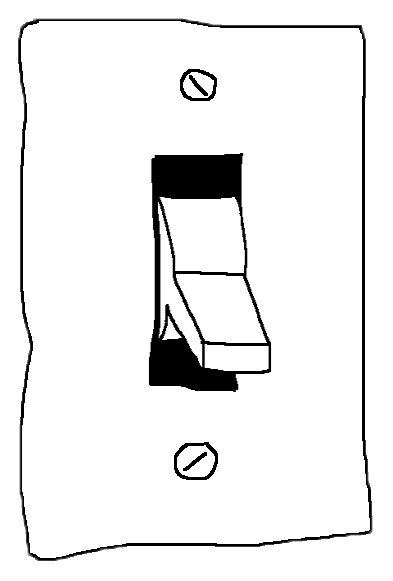

-

-
Behavior and computational modeling from this study suggests that 1) linguistic information is important for the reinforcement learning process to learn and 2) linguistic information is not that important for the working memory process to learn.
Yoo, Keglovits & Collins (2022). The importance of linguistic information in human reinforcement learning. PsyArXiv. [paper]
-

-
In this review, Anne and I discuss a bunch of literature that talks about the relationship between reinforcement learning and working memory, how they interact with other processes (attention, long-term memory), and how cognition and artificial intelligence could learn from one another! It was very fun and useful for me to write, and I hope it is useful to others!
Yoo & Collins (2022). How working memory and reinforcement learning are intertwined: a cognitive, neural, and computational perspective. JoCN. [paper]
-

-
How is priority represented in the brain during working memory?
In this study, we stuck some people in scanners while they completed a spatial working memory task.
We find evidence that, in visual cortex, neural populations (that presumably represent an item's location also) represent its priority through relative (not absolute!) BOLD amplitude. more stuff has to be done here, but maybe super cool!
Yoo, Bolaños, Hallenbeck, Rahmati, Sprague, & Curtis (2022). Behavioral prioritization enhances working memory precision and neural population gain. JoCN. [paper]
-

-
In this project, we tested whether our brain maintains a stimulus value (in our case, location) and its associated uncertainty through a probability distribution. We collected fMRI data while people did a spatial working memory task, then decoded probability distributions over remembered stimuli using generative model-based methods. We found that decoded location and uncertainty are correlated on a trial-to-trial level with behavioral error and uncertainty in some retinotopic cortical areas (V3AB and IPS0 did the best)!
Li, Sprague, Yoo, Ma, & Curtis (2021). Joint representation of working memory and uncertainty in human cortex. Neuron. [paper]
-

-
One of the cool things about Bayesian observer models is the general framework by which you can study a bunch of different phenomenon. However, Bayesian quickly becomes intractable in real-world settings, and there is reasonable evidence that people do not act Bayesian in a bunch of settings. In this paper, we propose "point estimate observer" models, which is computationally simpler, general enough to be applied to a variety of tasks (we try five perceptual tasks), and does reasonably well when compared to the Bayes optimal models.
Schütt, Yoo, Calder-Travis, & Ma (2021). Point estimate observers: A new class of models for perceptual decision making. PsyArXiv. [paper] [data and code]
-

-
Most behavioral and neural models of working memory conceptualize memories as noisy versions of the truth. However, a lot of them ignore that humans have different levels of uncertainty in their memories that may affect behavior. For example, you should be less likely to say that you think a stimulus has changed over a working memory delay if you really don't remember what it looked like in the first place (i.e., if you have high memory uncertainty). In this study, we show that people not only use uncertainty information in a change detection task, but maintain this information!
Yoo, Acerbi, & Ma (2021). Uncertainty is maintained and used in working memory. Journal of Vision. [paper] [data and code]
-

-
Objects are not equally important in the real world, and people unsurprisingly use this information in behavior (i.e., they remember more important stuff better than less important stuff). However, the process involved in allocating different amounts of resource to different items is still unknown. We used psychophysics and computational modeling to understand this process. We found that people's behavior was well described by a model in which observers allocate resource in order to minimize memory errors. Our study supports a resource rational framework of visual working memory.
Yoo, Klyszejko, Curtis, & Ma (2018). Strategic allocation of working memory resource. Scientific Reports. [paper] [data and code]
-

-
Although visual working memory has been studied extensively, it is unknown how people form confidence judgments about their memories. Inspired by Peirce (1878), we hypothesized that humans map the precision of their memories onto confidence through Fechner's law. We do a bunch of computational models and find really strong evidence of this logarithmic relationship! We also extend these findings to confidence reports in the word recognition memory literature.
van den Berg, Yoo, & Ma (2017). Fechner's law in metacognition: A quantitative model of visual working memory confidence. Psychological Review. [paper] [data and code]
-

-
When accused of a crime, racial or ethnic minority suspects may experience higher levels of anxiety and cognitive load than non-minority suspects. This increase in anxiety and cognitive load may relate to amplified guilty appearance for even innocent suspects. In this study, we show through behavioral, self-report, and physiological measures that Hispanic individuals experienced higher levels of stereotype threat, cognitive load, and arousal than White individuals when accused of committing a mock crime. Furthermore, while third-party observers were able to discriminate between White truth tellers and liars, discrimination for Hispanic individuals was close to chance. These results have important implications for interview and interrogation techniques in law enforcement. This is work done during my undergraduate.
Fenn, Blandón-Gitlin, Pezdek, Yoo (submitted). Sender Ethnicity, Stereotype Threat, and Detecting Deception in Criminal Investigations.
Blandón-Gitlin, Fenn, Masip, & Yoo (2014). Cognitive load approaches to detect deception: Searching for cognitive mechanisms. Trends in Cognitive Sciences. [paper]

